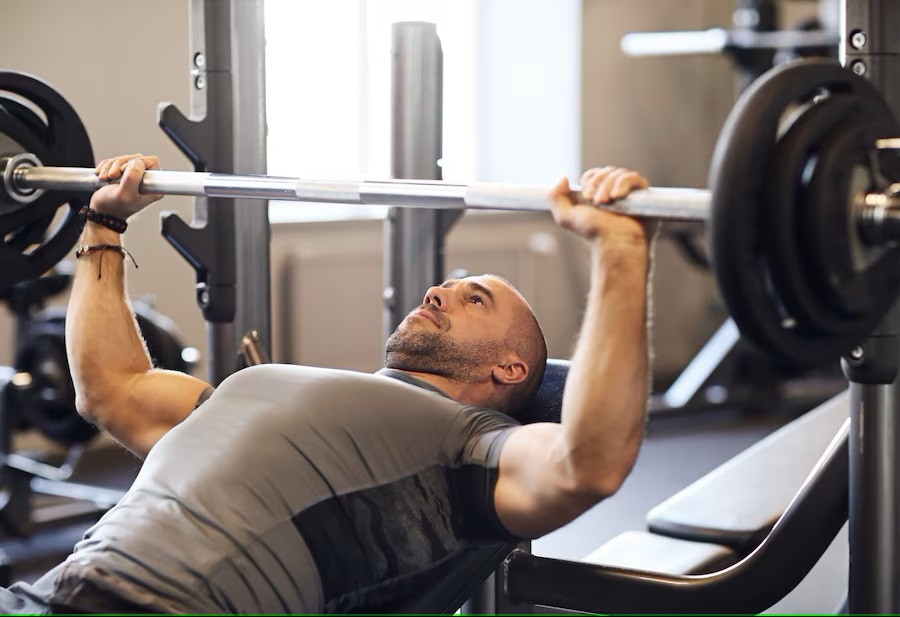Regular exercise is recommended by fitness professionals. According to experts, the recommended exercises consist of moderate-intensity and high-intensity exercises.
Both categories are defined by the length of time and intensity of movement during exercise. High-intensity exercise typically requires less time to complete. But a beginner shouldn't go immediately into high-intensity sports. To begin high-intensity training, check out this guide.
What are the differences between moderate-intensity sports and high-intensity sports?
Exercise with moderate intensity raises your heart rate, makes you a little breathless, but allows you to maintain your voice. Exercises that are classified as moderately intense include swimming, tennis, cycling, jogging at a moderate pace, and quick walking.
It is recommended that you exercise for 150 minutes per week at a moderate level, which equals around 30 minutes per day for five days.
On the other hand, high-intensity exercise is a more intense workout that increases the heart rate, breathing speed, and overall energy use. When you're doing high-intensity exercise, your main goal is to stay active, which can make you feel out of breath and make it hard to speak in full words.
High-intensity exercise has several health benefits, such as enhanced heart and lung fitness, muscle strength, weight loss, and increased metabolism.
High-intensity exercise is often recommended for at least 75 minutes each week, or approximately 25 minutes three days a week. High-intensity exercise options include jogging, high-speed cycling, strength training, and other activities that raise intensity and speed up your heart rate.
Read more: How To Overcome Muscle Krams After Exercise
What are the best tips for starting a high-intensity workout?
High-intensity exercise is not suitable for beginners. The American Heart Association (AHA) highlights how important it is for people with heart disease or who don't frequently exercise to know the risks of doing high-intensity workouts.
Although high-intensity exercise is beneficial to health, it can increase the risk of serious cardiovascular diseases in some people. For this reason, consider the following suggestions before starting a high-intensity exercise:
Consult your doctor
Before starting a high-intensity exercise program, visit a doctor, especially if you have a history of stroke, high blood pressure, shortness of breath, or are not used to intense exercise.
Read more: Best Sports Movement To Shrink Your Stomach
Start gradually
If you're not used to doing high-intensity exercise, it's advisable to avoid starting immediately. Simply begin with easier workouts and then raise the difficulty as you go.
Choose activities that you take pleasure in
It is preferable to find an activity that you genuinely take pleasure in, as consistency and routine are essential to effective exercise. Enjoyable activities motivate you to do them regularly and enthusiastically.
Beware of muscle pain
Beware that muscle pain may occur when starting or increasing the intensity of activity. DOMS is muscle discomfort that typically occurs hours to days following high-intensity activity. DOMS is not dangerous, but if you have sudden, intense, or severe pain, stop exercising and immediately see a doctor.
Maintain adequate hydration and nutrition
For energy before exercise, eat a small lunch with complex carbohydrates and protein 1-3 hours before training. Hydrate during exercise to replace fluids and electrolytes. After exercising, eat or drink carbs and protein within 30–60 minutes. This helps repair damaged muscles and regain energy after activity.
Take a break and relax
Daily, high-intensity exercise is not recommended. To recover muscles, prevent excessive exercise, and decrease the risk of injury, consider taking a day off. Additionally, for optimal training results, you need seven to eight hours of sleep per day.
Do you have any more questions before starting exercise training? If you need medical advice or consultation, you can either visit a doctor or make use of the consultation features that are available in the Ai Care application by downloading the Ai Care application from the App Store or Play Store.
Looking for more information about other diseases? Click here!
- dr. Monica Salim
Wendy Bumgardner (2022). The Benefits of Vigorous Intensity Exercise. Available from: https://www.verywellfit.com/what-is-vigorous-intensity-exercise-3435408
Mayo Clinic (2023). Exercise intensity: How to measure it. Available from: https://www.mayoclinic.org/healthy-lifestyle/fitness/in-depth/exercise-intensity/art-20046887
Mallory Creveling, ACE-CPT (2023). How Often Should You Work Out?. Available from: https://www.health.com/fitness/how-many-days-work-out
Cleveland Clinic (2024). What Does ‘Moderate-Intensity Exercise’ Mean Anyway?. Available from: https://health.clevelandclinic.org/what-does-moderate-exercise-mean-anyway
Harvard TH Chan: Examples of Moderate and Vigorous Physical Activity. Available from: https://www.hsph.harvard.edu/obesity-prevention-source/moderate-and-vigorous-physical-activity/
Health Direct (2022). How to start exercising. Available from: https://www.healthdirect.gov.au/tips-for-getting-active
Timothy Huzar (2020). Intense exercise comes with risks for some people, experts caution. Available from: https://www.medicalnewstoday.com/articles/intense-exercise-comes-with-risks-for-some-people-experts-caution
Livestrong. HIIT for Beginners: 7 Tips to Jump-Start Your Workouts. Available from: https://www.livestrong.com/article/13716442-hiit-for-beginners-6-tips-to-jump-start-your-workouts/
Gail Olson (2023). What Is Delayed Onset Muscle Soreness (DOMS) and What Can You Do About It?. Available from: https://www.healthline.com/health/doms
Arlene Semeco, MS, RD and Celia Shatzman (2023). Post-Workout Nutrition: What to Eat After a Workout. Available from: https://www.healthline.com/nutrition/eat-after-workout











